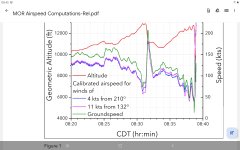It is definitely crazy what you see and hear out there sometimes.
Personally I start looking at weather 5 days ahead of flying a cross country flight and continue to check it until I climb in the airplane, then check it enroute with ADSB and listening to area AWOS reports regularly.
Case in point about other pilots:
The other day I flew to Knoxville downtown airport (KDKX). Weather forecast consistently showed that fog would be gone by 0800L so I launched at 0700 CDT (0800 @ KDKX). Get there and reported vis is 1/4 mile FG. Say it isn't so, the weather forecast was wrong, now that's a first

CAVU east and west of the TN river so I just started holding and ended doing that for a little over 2 hours because I had plenty of fuel before needing to divert. During that time I'm just listening to Knoxville approach and this is what I personally heard:
Bonanza heading to KTYS: approach control reports 1 OVC, vis 1/16 fog, RVR 1200/1000/800, "say your intentions".
Bonanza: "We'd like to fly the approach and see how it goes"

Lowest approach minimums are 1/2 mile visibility for runway 05L. They fly the approach and surprise, surprise, they went missed approach and thankfully headed to Gatlinburg.
Express flight heading to KTYS (here's your "professional" pilot)
Approach reports the same weather and asks "what weather minimums do you need?"
Express: "200 and 1/2"
Approach: "which one, 200, 1/2, or both"
Express: "well visibility is controlling so I guess 1/2"
Approach: "say your intentions"
Express: "we'd like to fly the approach and take a look"

Approach clears them they fly the approach and surprise, surprise, they miss and divert to GSP.
Last one, C172 heading to KDKX, same as me. KDKX reporting 300 OVC 1/4 FG by now.
Approach: "say your intentions"
C172: "standby, I'm looking at their approaches"
Mind you the best they got is a LOC 26 or an RNAV 26 and you need 1 mile visibility which we are nowhere near.
This guy gets cleared for an RNAV approach, makes it just past the IAF, and wisely decides to go missed approach early.
All three of these incidents, for lack of a better word, happened in the span of 2 hours with supposedly instrument rated pilots starting approaches with the weather reported at or below minimums. And you want to know why our insurance premiums keep going up? A whole lot of bad decisions been made out there. Thankfully nobody died on that day around Knoxville. After holding for a couple of hours, fog burned off and a VFR entry into KDKX was uneventful. Moral of the story, just because you have an instrument ticket, doesn't mean you can intentionally disregard the rules.
§ 135.225 IFR: Takeoff, approach and landing minimums.
(a) Except to the extent permitted by paragraphs (b) and (j) of this section, no pilot may begin an
instrument approach procedure to an
airport unless—
(1) That
airport has a weather reporting facility operated by the U.S. National Weather Service, a source approved by U.S. National Weather Service, or a source approved by the
Administrator; and
(2)
The latest weather report issued by that weather reporting facility indicates that weather conditions are at or above the authorized IFR landing minimums for that airport.

